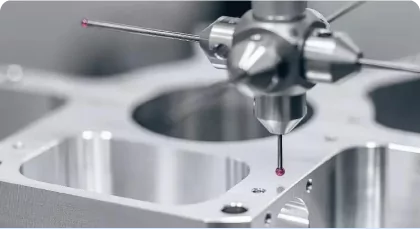Custom CNC Manufacturing Services
Custom CNC Manufacturing Services
In today's fast-paced manufacturing world, precision and efficiency are paramount. Whether you’re an engineer, product designer, or manufacturer, custom CNC (Computer Numerical Control) manufacturing services offer a highly accurate and reliable solution for producing parts and products with intricate designs and exact specifications. These services have revolutionized industries such as automotive, aerospace, medical, and electronics by providing high-quality results at scale.
What Is Custom CNC Manufacturing?
Custom CNC manufacturing refers to the use of CNC machines to create parts and products based on detailed specifications or designs. CNC machines are automated tools that use a computer program to control the operation of the equipment, such as drills, lathes, or mills. With custom CNC manufacturing, companies can produce a wide range of components with high accuracy, efficiency, and repeatability.
Unlike traditional machining methods, CNC manufacturing allows for greater design flexibility and a higher level of automation, resulting in less human intervention, fewer errors, and faster production times.
How Custom CNC Manufacturing Works
Custom CNC manufacturing involves several key steps to transform your design concept into a finished product.
1. Design and CAD Modeling
The first step in the custom CNC manufacturing process is to create a design using CAD (Computer-Aided Design) software. This design is then used to create a digital model of the part or product, ensuring that all dimensions and specifications are met. CAD software allows designers to visualize the part before production begins and make adjustments if necessary.
2. CNC Programming
Once the design is finalized, it is translated into a program that can be read by the CNC machine. CNC programming defines the machine’s movements, cutting paths, and tool changes to ensure the part is produced to the correct specifications.
3. Material Selection and Preparation
After the design and programming are complete, the appropriate material for the part is selected. The material is then prepared, which may involve cutting it into the required size or shape, depending on the project’s specifications.
4. Machining Process
The CNC machine is set up, and the program is loaded. The machine then begins the process of removing material from the workpiece to create the desired shape. This could involve milling, turning, drilling, or cutting, depending on the type of CNC machine used.
5. Quality Control and Finishing
Once the part has been machined, it undergoes quality control to ensure it meets the required specifications. This may include measuring the part, testing its functionality, or inspecting it for defects. After passing quality control, the part may go through finishing processes such as polishing, coating, or assembly before being delivered to the client.








